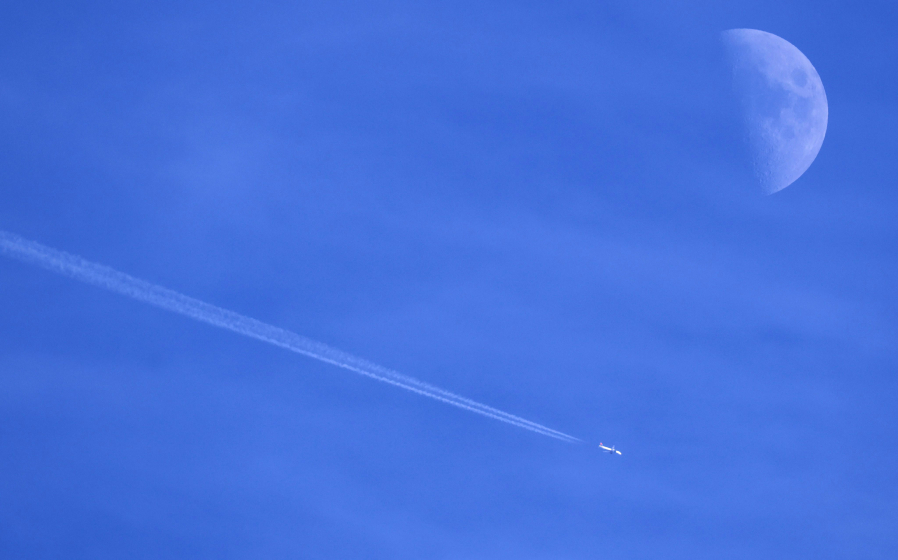DALLAS — American Airlines and Google were able to cut contrails made by jets by more than half during a small trial, a move that could significantly reduce the global-warming footprint of the travel industry, but with a slight increase to fuel use.
As the airline industry pushes and waits for more sustainable fuels and alternative power engines, many major carriers have shifted focus to the emerging field of studying contrails, once considered an innocent byproduct of water vapor at high altitudes. But those whispy clouds are actually a significant environmental detriment because they hold heat in the atmosphere that would otherwise escape.
Some studies say contrails may contribute more to global warming than vehicle emissions or carbon dioxide, but scientists and airlines are just beginning to tackle the emerging field of radiative heating.
“Avoiding contrails might be one of the best ways to limit aviation’s climate impact, and now we have a clear demonstration that it’s possible to do so,” said Marc Shapiro, Breakthrough Energy’s director of contrail studies. “This study is a great example of what happens when creative, ambitious organizations work together to better understand and solve a tough problem, and we’re grateful for American’s and Google’s partnership.”
The initial trial tested 70 flights, modifying flight paths to try to avoid conditions with altitudes, weather and humidity where they thought contrails were most likely to form. They were able to cut down on contrail coverage by about 54%, based on Google’s satellite imagery. But those flights had to use about 2% more fuel to gain the results.
Last fall, a group of carriers including American and Dallas-based Southwest Airlines teamed up with the Rocky Mountain Institute and Google Research to address the contrail issue. United, Alaska and Virgin Atlantic are also part of the study. That same month Atlanta-based Delta Air Lines partnered with the Massachusetts Institute of Technology to study contrails.
“One of the main reasons that we had success is that we had a small group of pilots who were really excited about trying this,” said American Airlines vice president of sustainability Jill Blickstein. “And then we recruited a couple of additional pilots who didn’t really know what we were talking about, but when they did it, they found that it was very interesting.”
To select the flights that they would monitor, Google and Breakthrough Energy used artificial intelligence software to study weather, satellite imagery and flight path data. They then slightly modified flight plans during the 70 flights, which happened over six months. All were during the day and roughly half used the contrail avoiding software to adjust altitude, while half did not.
Fuel burn increases even though the distance covered does not, Blickstein said. Planes fly the most efficiently at maximum altitudes where the air is thinnest. But that’s also where contrails form the easiest. In this test, pilots only lowered altitude to avoid contrails, similar to the way they adjust to avoid turbulence, she said.
“The reason American wanted to be involved in this research and our partners came to us is because they don’t have the expertise and the aircraft that we have.”
The worst contrails happen at night when the earth is naturally cooling without sunlight but man-made clouds at that critical altitude can block heat from escaping. Some theorize that contrails during the day may actually block light that bounces off the Earth and turns into heat.
But modifying flight paths isn’t so easy in the complicated world of planning routes. Airlines have to factor in adverse weather, turbulence and speed.
Even a 2% increase in fuel costs is massive for an airline that spent $13.8 billion on jet fuel in 2022. Google thinks an airline like American would only need to burn about 0.3% more fuel to cut down on contrails because only certain flights are likely to create the vapor trails.
“This is a really rare opportunity for us to do something that is going to benefit our entire industry,” Blickstein said. “We’re all going to have to be in the race. I think this won’t be competitive. I think this will be an industry effort.”




